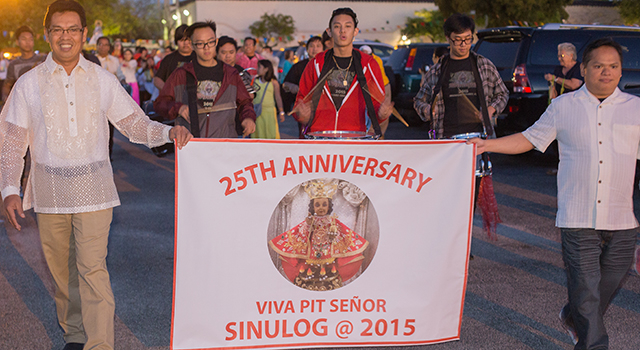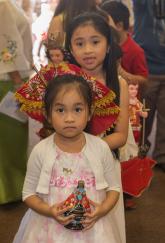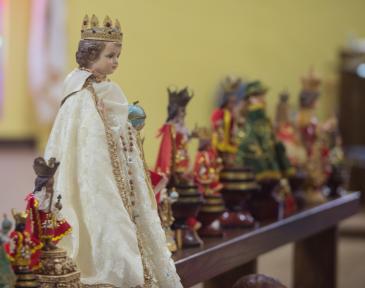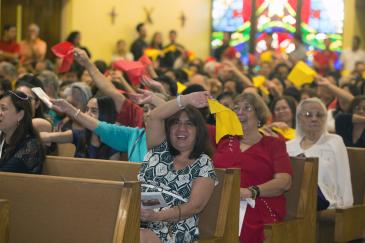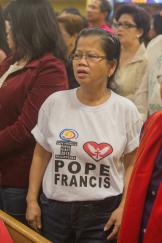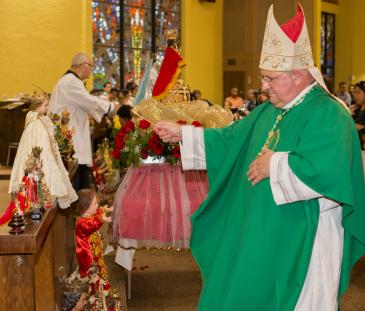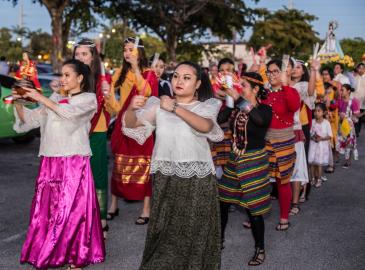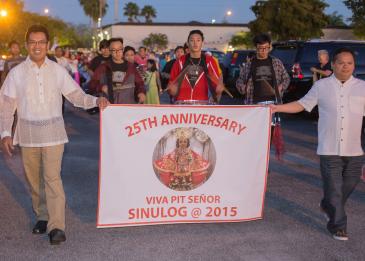By Marlene Quaroni - Florida Catholic
Photography: MARLENE QUARONI | FC
SUNRISE | Just as Pope Francis had done earlier that day in the Philippines, Auxiliary Bishop Peter Baldacchino blessed hundreds of statues of the Santo Niño de Cebu here in South Florida Jan. 18, as the Filipino community gathered to celebrate their traditional feast day of the Holy Child.
“We gather to celebrate the great devotion of Santo Niño,” Bishop Baldacchino told those gathered for the 25th celebration of the Santo Niño Sinulog at St. Bernard Church.
Sinulog is an annual religious and cultural festival at the center of the Santo Niño celebration. Bishop Baldacchino acknowledged the richness of the Filipino community in his homily.
“Filipinos have brought a certain aspect of Catholic culture, a diversity and richness to the Archdiocese of Miami,” the bishop said. “You came here in search of a better life. Never forget your faith.”
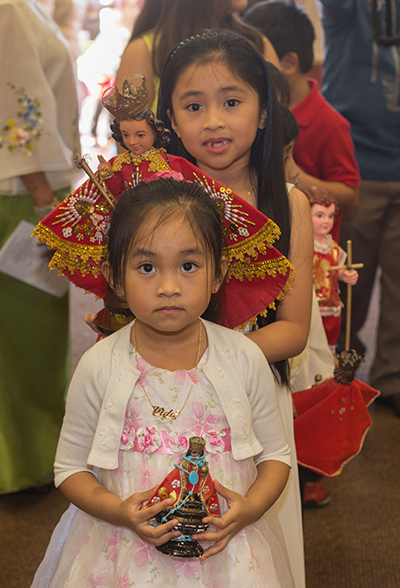
Photographer: Marlene Quaroni
Honey Labrada, 4, and her sister, Elizabeth Labrada, 6, line up to process into church carrying their Senor Santo Nino statues.
As Filipinos waved red and yellow napkins during the offertory, Bishop Baldacchino asked for one of the yellow napkins and joined the congregation in waving the symbol of the Santo Niño. The statue was dressed in those colors when explorer Ferdinand Magellan brought it to Cebu in 1521. It is believed to have been given to the wife of the island chieftain after her baptism, which was the dawn of Christianity in the country.
A large statue of the Holy Child was enshrined at St. Bernard Church in December 2013. Originally, Rose Battad, who began the devotion to Santo Niño in 1990 in South Florida, owned the statue. She gave it to Dr. George Lim, president of the Santo Niño Sinulog of South Florida.
Dr. Lim thanked Father Carlos Vega, St. Bernard’s pastor, for giving the statue a permanent home. A monthly Filipino Mass, sponsored by the Filipino apostolate, also is celebrated at St. Gregory Church in Plantation.
“We are forever grateful to you, Father Vega,” said Dr. Lim. He then invited the congregation to a salu-salo, a traditional Filipino dinner, in the parish hall.
Thousands of miles away, another big event was underway in the Filipinos’ homeland, a papal visit.
Bishop Baldacchino asked the congregation to applaud the visit of Pope Francis to the Philippines, which coincided with the Santo Niño feast day. The pope’s main objective was to visit the millions of victims of Typhoon Haiyan in November 2013. During his January 15-19 visit, the pope celebrated Masses in Manila and Haiyan-ravaged Tacloban City. He also blessed millions of Santo Niño statues which Filipinos brought with them to Mass.
Janet Macasero, one of the leaders of the Filipino apostolate here, said that her cousin was a link in the human barricades that formed a barrier between the people and the pope.
“It was my cousin’s birthday and he said he felt especially blessed to see the pope,” said Macasero. “The pope’s visit is an inspiration to all of us Filipinos. We love his simplicity, humility and love of children and the poor.”
Previous papal visits took place in 1995, when Pope John Paul II visited Manila for World Youth Day, and when he made a pastoral visit in 1981. Pope Paul VI was the first pope to visit the country in 1970.
After the Mass here, Filipinos carried a giant statue of Santo Niño and another of the Virgin Mary in a procession from St. Bernard Church to the parish hall, where a reception took place with costumed dancers performing native Filipino dances and a historical skit about the origins of Santo Niño in the Philippines.
A dozen drummers led the procession as marchers danced, waving candles and red and yellow napkins. The dancers move two steps forward and one step backward to the lively Sinulog drum beat.
“The beat resembles the current, sulog, of what was known as Cebu’s Pahina River,” said Norman Amparado, a native of Cebu who played a xylophone in the procession.
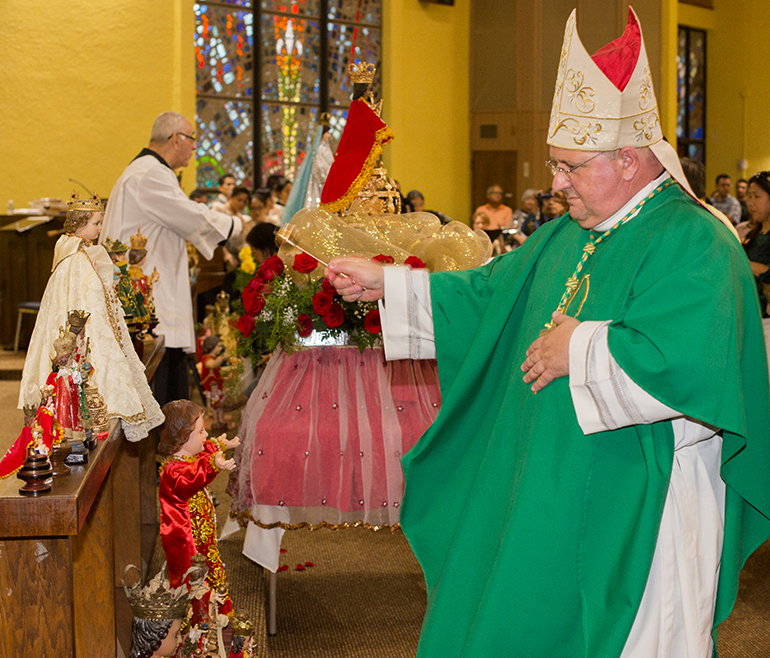
Photographer: Marlene Quaroni
Auxiliary Bishop Peter Baldacchino blesses statues of Senor Santo Nino lined up on altar rail of St. Bernard Church.
